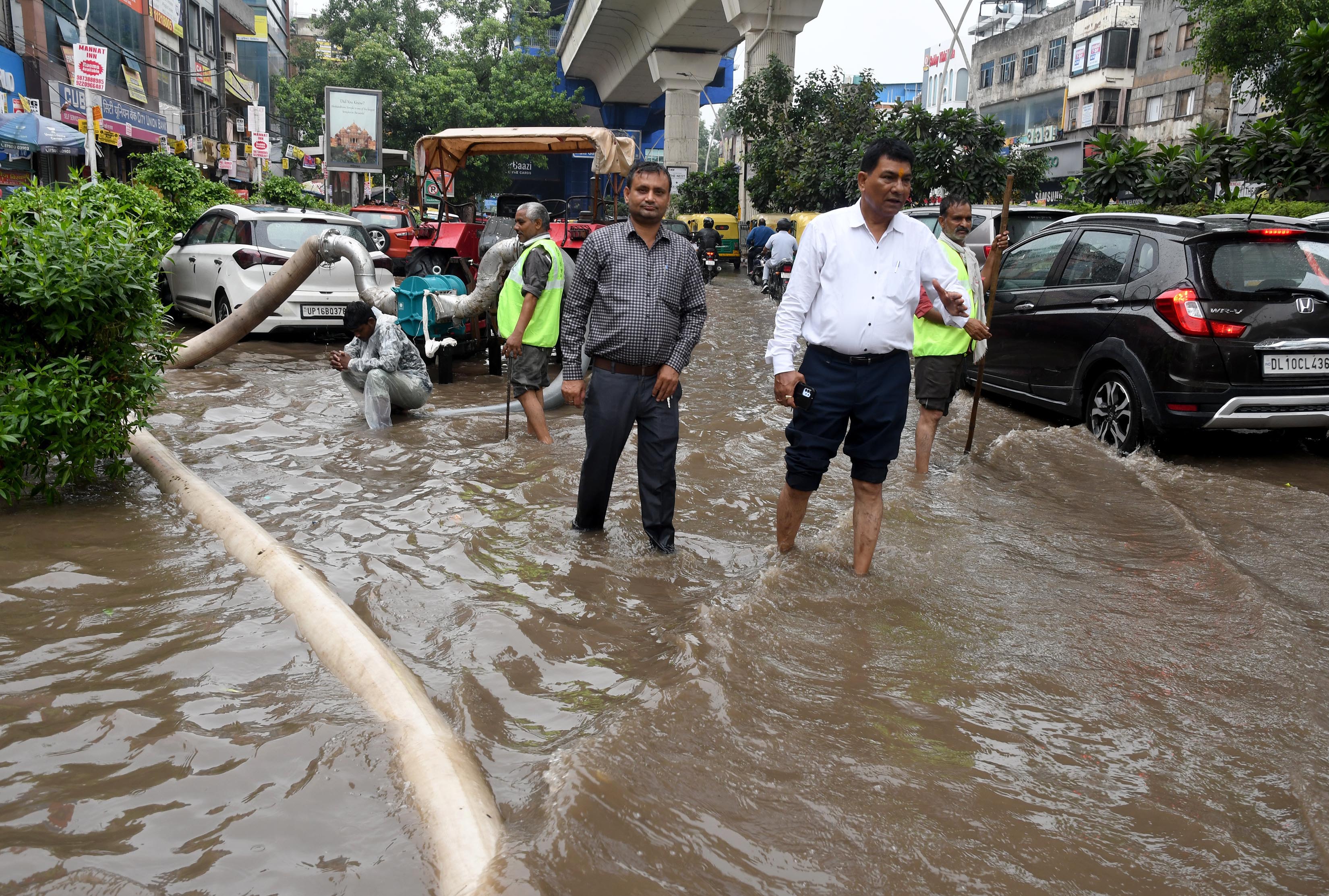No waterlogging at Minto Bridge as rain lashes Capital
The iconic Minto Road Bridge, long seen as a symbol of Delhi’s monsoon woes, remained free of waterlogging on Wednesday despite heavy showers lashing the city, much to the surprise of commuters and onlookers as traffic moved smoothly through the area.
Located at the key junction of Deen Dayal Upadhyaya (DDU) Marg and Swami Vivekananda Marg in central Delhi, Minto Bridge had come to represent the Capital’s poor rain infrastructure, with repeated incidents of vehicles getting stranded and even fatalities during heavy rainfall in recent years. But this monsoon, the situation appears to have improved.
According to a Public Works Department (PWD) official, the credit goes to recent engineering upgrades, including the installation of improved motors at the pumping station and the addition of an automatic pump that activates when water reaches a certain level.
Built during British era
The Minto Bridge, also known as the Minto Road underpass, was built during the British era and connects Connaught Place with key government and residential areas such as ITO, Ajmeri Gate and the New Delhi Railway Station.
For decades, the underpass has been a chronic trouble spot during heavy rainfall. Even a few centimetres of rain can flood the area, rendering it impassable for vehicles and hazardous for pedestrians.
Its naturally low-lying location, combined with poor drainage planning, has worsened the issue year after year.
The changes appear to be paying off, with the site even being removed from the Public Works Department’s round-the-clock surveillance list after no waterlogging was reported there on Wednesday.
However, the rest of the city wasn’t as fortunate. A heavy morning downpour caused major traffic snarls across Delhi, delaying office-goers and schoolchildren alike, as several areas reported severe waterlogging.
 Pumps deployed to drain a waterlogged Vikas Marg during Wednesday’s downpour in New Delhi. TRIBUNE PHOTO: Manas Ranjan BHUI
Pumps deployed to drain a waterlogged Vikas Marg during Wednesday’s downpour in New Delhi. TRIBUNE PHOTO: Manas Ranjan BHUI
Traffic disruptions were reported from various parts of the city, including South Delhi, Southeast Delhi, North Delhi, ITO, South Extension, NH-8, Mehrauli-Gurgaon Road, Nehru Place, East of Kailash and Colony Road, among others.
According to the India Meteorological Department (IMD), Delhi recorded 23 mm of rainfall. Specific readings included 34 mm at Pragati Maidan, 33 mm at Ridge, 31 mm at Lodi Road and 24 mm at Pusa.
Criticising the government’s monsoon preparedness, AAP Delhi chief Saurabh Bharadwaj said, “As large parts of Delhi turned into swimming pools, residents were seen wading through knee-deep water — some even boating through inundated streets.”
Change comes from actions, not words
Pictures are proof. Change comes from actions, not words. Truly, Delhi is changing. – Manjinder Singh Sirsa, Delhi minister
Delhi